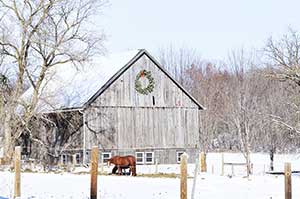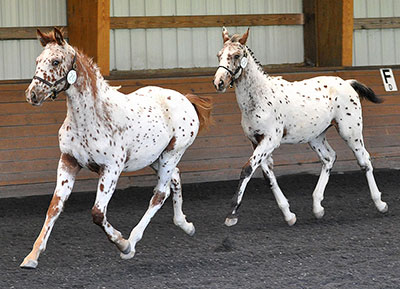Watch the story of the incredible impact that a small nonprofit organization is having on the community of Oakland, California. “We Ride Too” is committed to serving a wide range of young people in the Oakland area who face various challenges and traumas with limited access to resources. Through programs for youth to connect with nature and horses, each child has a place where they are told they "can," instead of "can't," breaking barriers and making a difference for their mental health and future.
As part of our mission to spread awareness of the healing power of horses, we seek to share stories of transformation that illustrate the healing journey and personal growth people can experience through the involvement of horses in mental health programs and services.

By Jennifer Roberts
As the air begins to chill and the temperature drops, it’s time to start thinking about winter preparation in the barn. While it may seem cliché to say, an ounce of prevention truly is worth a pound of cure when it comes to getting ready for the winter months.
Get a handle on winter now, with these quick tips that will allow you to breathe a little easier once the frigid temperatures hit.
Fix your fencing now: Ensure that your fencing is all in tip top condition before the snow flies. It is much easier to replace broken fence boards now, and if you need to repair fence posts, the frozen ground will make in nearly impossible in the upcoming months.
Bucket Brigade: If you plan to use heated buckets, it’s time to get them out NOW… before you have to chip ice out of them on that first freezing morning. Even if you don’t use bucket heaters, make sure that your water line is well insulated and you are not at risk of it freezing if the temperatures suddenly plummet.

The Knabstrupper horse is an old and rare breed, originally developed in Denmark the horses come from the same original stock as the Spanish horses that gave rise to the Appaloosa. The Knabstrupper and the Appaloosa share the same unusual color patterns, they are the ‘spotted’ horses. The color variations range from the whole body spots of the classical Leopard pattern (sometimes called “Tiger’ pattern), in bay, black and chestnut to the blanket spotting and to varnish roan and snowflake patterns.
While their unusual color patterns make them eyecatching and different to look at, what makes the Knabstrupper really special is their superb temperaments and willing kind natures. Bred as working horse and selected as much for attitude and ability as beauty the Knabstrupper is a true family horse.
Read more: Introducing the Rare, Colorful and Beautiful Knabstrupper Breed
Julie Goodnight shows you the basic gaits and footfalls of the horse and how they apply to your riding.
For more information on the largest certifying body of riding instructors and barn managers in North America, Certified Horsemanship Association, please visit www.CHA.horse. To find a certified equine professional or accredited equine facility near you, visit www.CHA.horse
Read more: Gaits and Footfalls of the Horse with Julie Goodnight (9:58)
Our Mission — Serving the professional horse person, amateur owners, occasional enthusiasts and sporting interests alike, the goal is to serve all disciplines – which often act independently yet have common needs and values.
Equine Info Exchange is totally comprehensive, supplying visitors with a world wide view and repository of information for every aspect related to horses. EIE provides the ability to search breeds, riding disciplines, horse sports, health, vacations, art, lifestyles…and so much more.
EIE strives to achieve as a source for content and education, as well as a transparent venue to share thoughts, ideas, and solutions. This responsibility also includes horse welfare, rescue and retirement, addressing the needs and concerns of all horse lovers around the world. We are proud to be a woman-owned business.